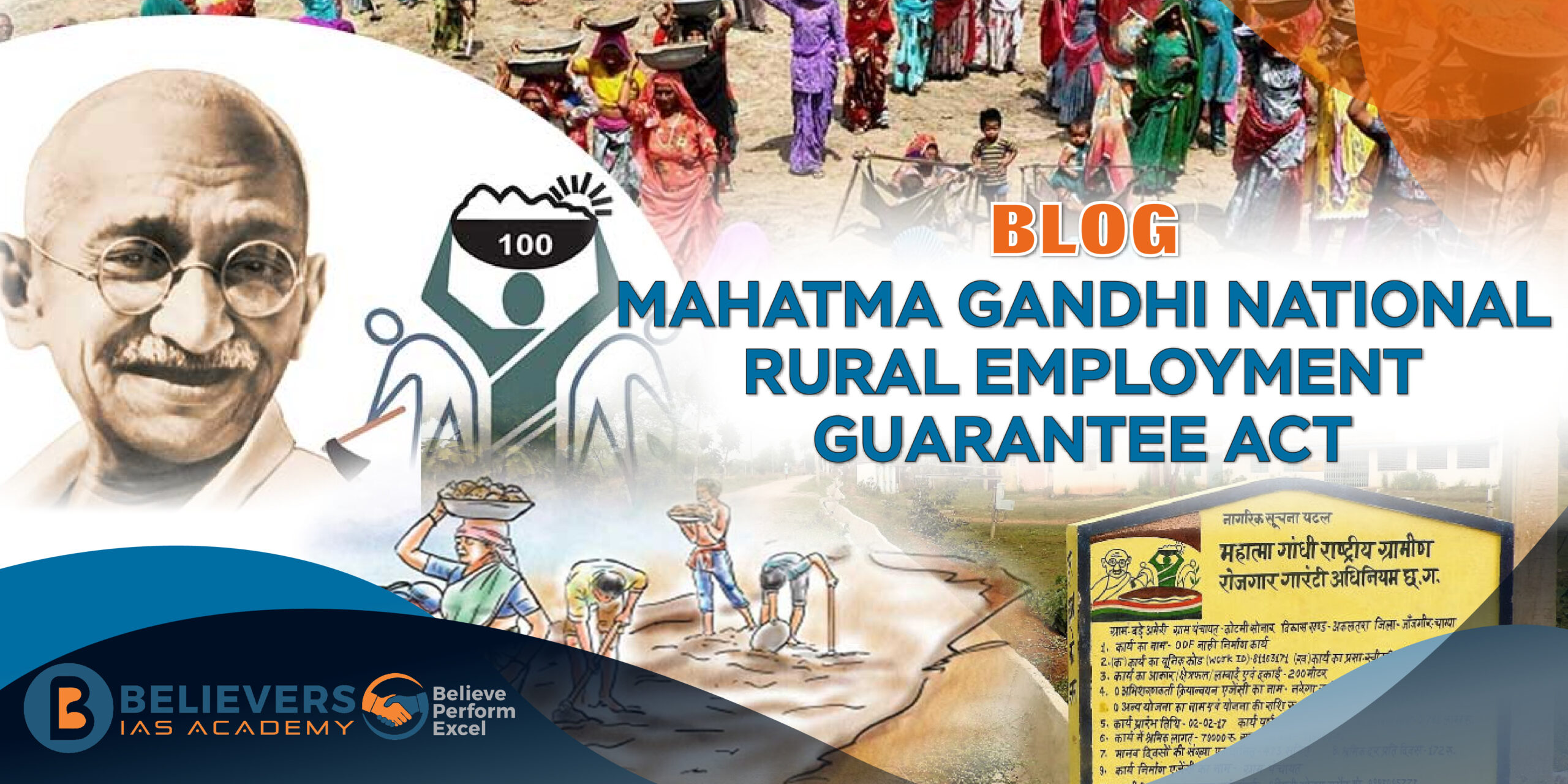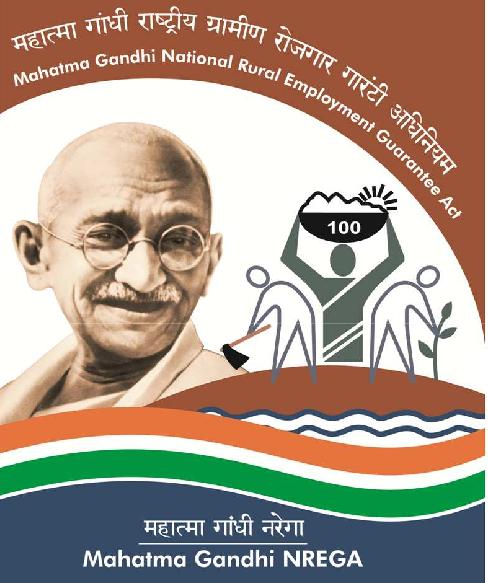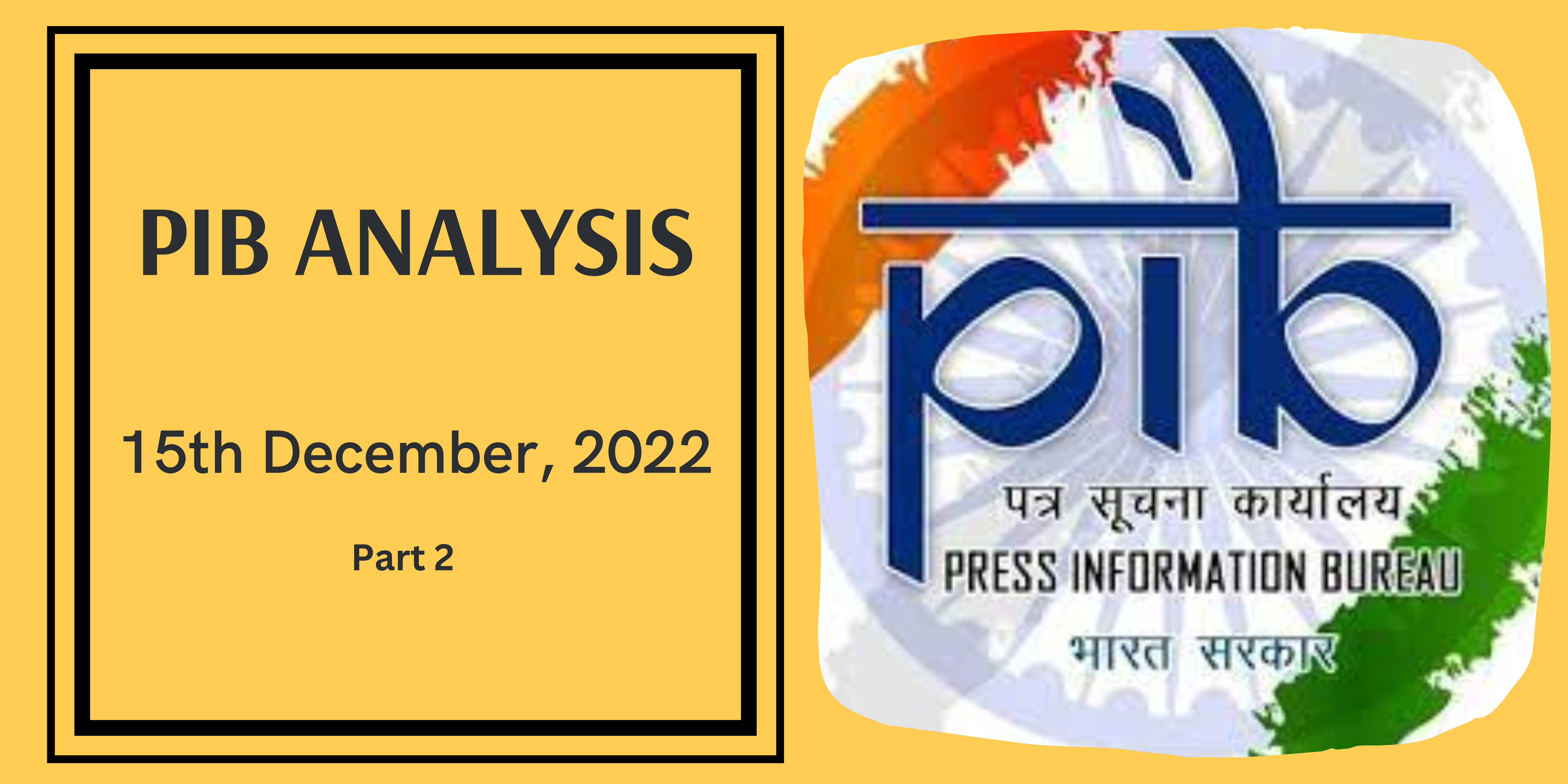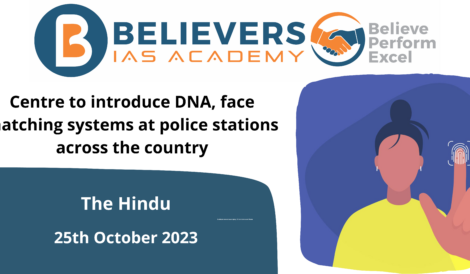Mahatma Gandhi National Rural Employment Guarantee Act
The Mahatma Gandhi National Rural Employment Guarantee Act of 2005, also referred to as the MGNREGA or NREGA(Former name), is a social welfare program in India that attempts to protect the “right to work.” The UPA government of Prime Minister Manmohan Singh passed this law on August 23, 2005, and it came into effect in February 2006 as a result of Minister for Rural Development Raghuvansh Prasad Singh’s parliamentary introduction of the bill.
What is the historical background of this scheme?
- India has struggled to create viable job programs in rural areas since the 1960s.
- The Rural Manpower Programme, Crash Scheme for Rural Employment, and Pilot Intensive Rural Employment Programme are just a few of the employment creation initiatives that were put into place.
- With a focus on decentralized implementation through regional village administrations (Panchayati Raj Institutions), the Jawahar Rozgar Yojana (JRY) was started in 1989.
- The Employment Assurance Scheme (EAS) was started in 1993 to give agricultural employees work during off-seasons.
- To create Sampoorna Gramin Rojgar Yojana (SGRY), which combines the development of infrastructure, food security, and employment generation, EAS and JRY were united in 2001.
- The Panchayati Raj Institutions’ role in implementation was further reinforced in 1999 with the introduction of the Jawahar Gram Samridhi Yojana (JGSY).
The foundation for the creation of MGNREGA was set by these diverse plans and initiatives. The difficulties of poverty and unemployment in rural regions have persisted, and the implementation of these programs has increased awareness of the need for a comprehensive and successful rural job guarantee program.
What are the objectives of MGNREGA?
- ‘Right to Work Guarantee: The main goal of MGNREGA is to give every rural household with adult members who are willing to perform unskilled manual labour a legal guarantee of at least 100 days of paid employment in a fiscal year.
- Enhancing Livelihood Security: By giving households in rural areas regular and dependable job opportunities, MGNREGA hopes to improve the security of their means of subsistence.
- Building Durable Assets: The act intends to build durable assets through labour-intensive activity, helping to develop rural infrastructure and resources, such as roads, canals, ponds, and wells.
- Promoting Gender Equity: To empower rural women and advance gender equity, MGNREGA makes sure that one-third of the employment offered under the program is reserved for women.
- Reducing Rural-Urban movement: MGNREGA intends to lessen the distress-driven movement of rural residents to urban centres in pursuit of livelihoods by creating employment opportunities in rural areas.
- Environmental Protection: The act encourages practices that promote environmental preservation and sustainable development, such as water conservation, afforestation, and rural connectivity.
- Fostering Social equality: MGNREGA works to advance social equality by giving underprivileged and marginalized groups in society equal employment opportunities.
- Decentralized Implementation: The act promotes decentralization and community involvement by involving local self-government institutions (Panchayati Raj Institutions) in the scheme’s implementation.
- Ensuring Transparency and Accountability: The MGNREGA places a strong emphasis on transparency and accountability in the way it is implemented, using tools like social audits, community watchdogs, and record-keeping.
- Convergence with Other Programs: The legislation permits convergence with other development initiatives, guaranteeing that the MGNREGA’s efforts to create jobs do not compete with those of other programs.
What is the importance of this programme?
- Poverty Alleviation: By giving rural households work possibilities, MGNREGA aims to alleviate poverty by assuring a basic level of income and strengthening the security of one’s livelihood.
- Employment Creation: To effectively address the issue of unemployment and underemployment in rural areas, the initiative generates a significant number of employment possibilities there.
- Rural Infrastructure Development: Construction of roads, water-conservation structures, and rural connectivity are among the labour-intensive tasks that MGNREGA prioritizes, resulting in better infrastructure and development in rural areas.
- Social Inclusion and Empowerment: MGNREGA encourages gender equality and women’s empowerment in rural communities by allocating one-third of the jobs to women.
- Environmental Protection: The program encourages actions that help environmental preservation and sustainable development, such as water conservation and afforestation.
How is the MGNREGA implemented across the country?
- Funding: The central government includes money for MGNREGA in its yearly budget. The states are then granted access to these funds by their labour budget projections and performance from the preceding year.
- Labour Budget: Each state creates a labour budget that projects the amount of work needed and the necessary funding for the upcoming fiscal year. The labour budget is calculated using demand forecasts from gram panchayats and other local organizations.
- State-level Allocation: Based on their labour budgets and the demand for labour in each district, the state governments distribute the money received from the federal government to various districts.
- Planning and Prioritization: A draft shelf of projects, including a list of permitted works intended to be undertaken in the district, is prepared by the District Program Coordinator (DPC) at the district level. In collaboration with gram panchayats and other stakeholders, this list was created. The District Planning Committee subsequently approves the draft shelf of projects.
- Preparation of Labour Budget: The gram panchayats estimate the demand for work in their particular areas by creating a labour budget based on the requests they have received from householders. Block-level consolidation of the labour budget is followed by transmission to the district administration.
- Job Card and Registration: To gain employment under MGNREGA, households must register for a job card at their neighbourhood gram panchayats. All adult members of the household are listed on the employment card, along with a photo that serves as registration documentation.
- Demand for Work: Families with job cards have the right to ask the gram panchayat for employment. According to the act’s provisions, the gram panchayat then registers the demand and executes the work within 15 days after the demand registration.
- Work Allocation: The gram panchayat prioritizes the projects from the authorized shelf of projects and distributes work to the job card holders depending on demand and available money after consulting with the gram sabha (village assembly).
- Work Execution: The gram panchayats are in charge of ensuring that the approved works are carried out. The gram panchayat is in charge of making sure that the job is completed promptly and correctly, including in terms of quality.
- Paying Employees: Employees’ bank or post office accounts are promptly credited with their wages for completed labour. The workers must get their earnings within 15 days of finishing the work, as required by MGNREGA, which also mandates prompt payment of wages.
- Social Audits: The MGNREGA program places a strong emphasis on accountability and openness. To make sure that money is used appropriately and that the work is of a high standard, the gram sabha and other social audit authorities verify and examine how the scheme is being implemented.
- Monitoring and evaluation: To gauge the program’s effectiveness and progress, the implementation process is monitored at several levels, including the district, state, and central levels. Regular assessments aid in identifying problems and potential improvement areas.
What are the achievements of this scheme?
- helps people deal with employment pressures brought on by mass migration during difficult times, such as during a pandemic.
- The employment paradigm has changed since the right to work was made legal as a component of the right to life.
- reduced socially unsound behaviour as well as poverty among the poor. MGNREGS decreased poverty by up to 32% between 2004–2005 and 2011–12, according to the Ministry of Rural Development (MoRD) and the National Council of Applied Economic Research (NCAER) 2021 report.
- Using social audits to empower people and decentralized planning through Panchayati Raj Institutions, local planning can be done per residents’ priorities.
- the primary force behind local water conservation as 143 lakh hectares of land benefited from these actions between 2014 to 2018 as per the NREGA portal.





